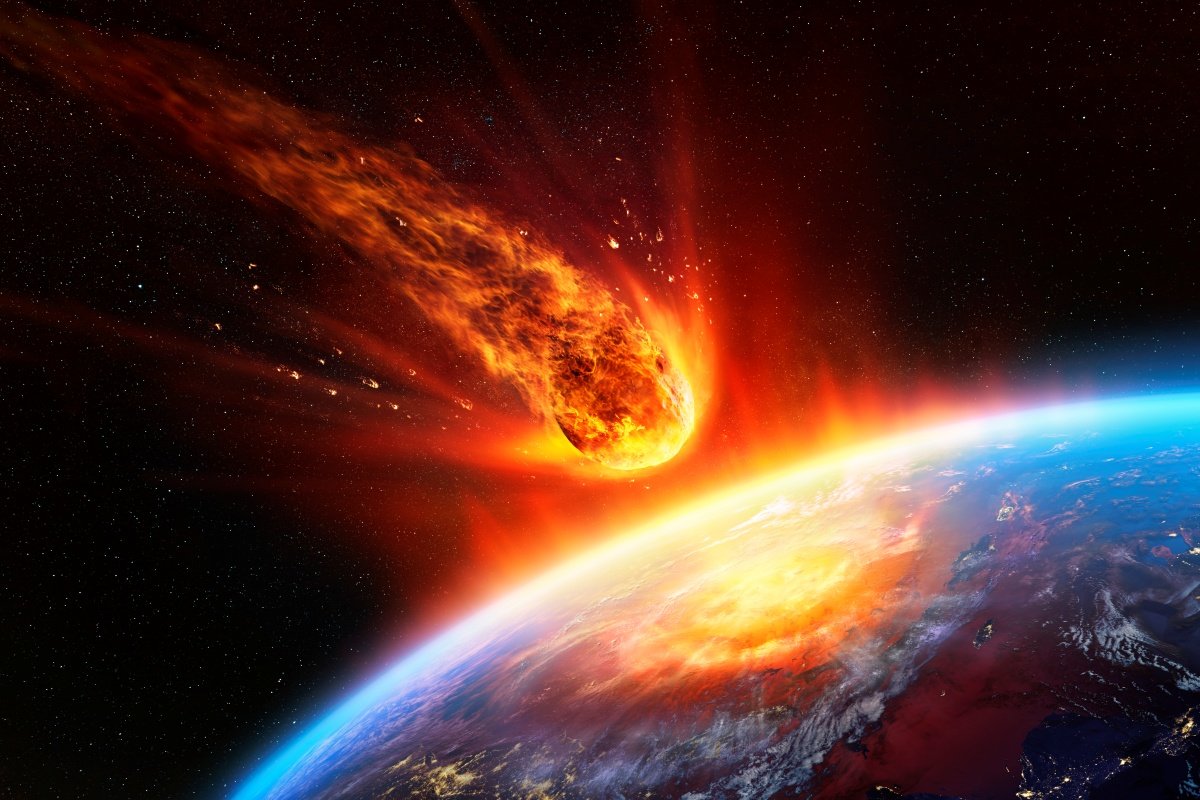*This text was written by a TecMundo columnist; finally learn more.
Water is everywhere on Earth – in clouds, rain, oceans, rivers and even in our own bodies – and we can easily find it in any liquid, solid or gaseous form. In fact, about 71% of Earth’s surface is covered with water, which is why we affectionately call it the blue planet.
But our planet was completely different in the early stages of its formation. There were no well-defined continents or an oxygen-rich atmosphere, and no less vivid contrast between the blue of the oceans and the green of the vegetation. About 4.5 billion years ago, at the beginning of its history, the environment on planet Earth was completely chaotic and uninhabitable.
Compared to most of the other planets on Earth solar systemThe Earth formed relatively close to the Sun. In early childhood, the extremely high temperatures of Earth’s extremely active surface meant that it was still unlikely to keep water in any physical state, and not a single drop would survive long enough to tell the tale.
But shortly after the Moon formed, only a few million years later, there were probably already continents and oceans of salty and liquid water, and our planet was about as far from the Sun as we find it today. The planet rotated on its axis much faster than its current rotation period (about three to four times its current speed), and as the planet rotated on its axis and revolved around the Sun, the water froze, melted, collapsed, and large reservoirs of fresh water were formed. water was formed.

But how did this happen? How did water form on a planet whose initial conditions were so hostile to the existence and formation of this liquid so common today?
The truth is that the original source of water on Earth has been and still is a longstanding mystery. Scientists from different fields of human knowledge such as physics, chemistry, biology, geophysics, astronomy have been trying to answer these questions for decades.
The most accepted scientific hypothesis today is that water on Earth has an extraterrestrial origin: Most astronomers believe that distant asteroids and comets brought it to our primeval planet. This hypothesis proposes that these space rocks carried the minerals and frozen water that made them up for billions of kilometers through interplanetary space until they collided with Earth and deposited their contents on our surface.
Classified as type C, these asteroids are most common in the Solar System and bombarded our planet’s surface very often during Earth’s first million years due to the orbital instabilities of planets and still-forming objects. higher current impact rate than before, therefore possible sources for available water quantities.
However, other scientific hypotheses, using the results of measurements of hydrogen isotope ratios in comets such as Halley, Hyakutake, and Hale-Bopp, argue that it is unlikely that all the water on Earth originated from this asteroid bombardment. The results showing the deuterium protium ratio (D/H ratio) of comets is about twice that found in ocean water and is therefore a negative indicator for the bombardment hypothesis.
In recent years, a new and promising hypothesis has come to the fore in the scientific community: that the water may have arisen from the influence and activity of the Sun. Recent research shows that the solar wind (the flow of charged particles emitted from the Sun) creates surface water from tiny grains of dust, and that these tiny amounts of water are likely the seeds of future chains that supply Earth’s remaining water.

According to this new hypothesis, when hydrogen ions hit a surface without an atmosphere, such as an asteroid or a dust particle in space, they penetrate several tens of nanometers below the surface of that grain, where they can affect its chemical composition. source. Over time, hydrogen ions can remove enough oxygen atoms from materials in the rock to form H2O, water.
Water derived from the solar wind produced by the early Solar System is isotopically light, indicating that fine dust grains hammered by solar particles and drifted to Earth in formation billions of years ago may have been the source of the planet’s water reservoir.
In the coming years, as more astronomical observations and new data analyzes are made, these hypotheses are expected to gain new chapters and explain more about the formation and structure of our planet and the existence of life on Earth.
Nicolas Oliveiracolumnist TecMundoHe holds a bachelor’s degree in Physics and a master’s degree in Astrophysics. Professor and currently doing his PhD working with galaxy clusters at the National Observatory. He has experience in Teaching Physics and Astronomy and researching Extragalactic Astrophysics and Cosmology. It works as a scientific dissector and communicator for the dissemination and democratization of science. Nicolas is found on social networks as: @nicooliveira_.
Source: Tec Mundo
I am Bret Jackson, a professional journalist and author for Gadget Onus, where I specialize in writing about the gaming industry. With over 6 years of experience in my field, I have built up an extensive portfolio that ranges from reviews to interviews with top figures within the industry. My work has been featured on various news sites, providing readers with insightful analysis regarding the current state of gaming culture.












